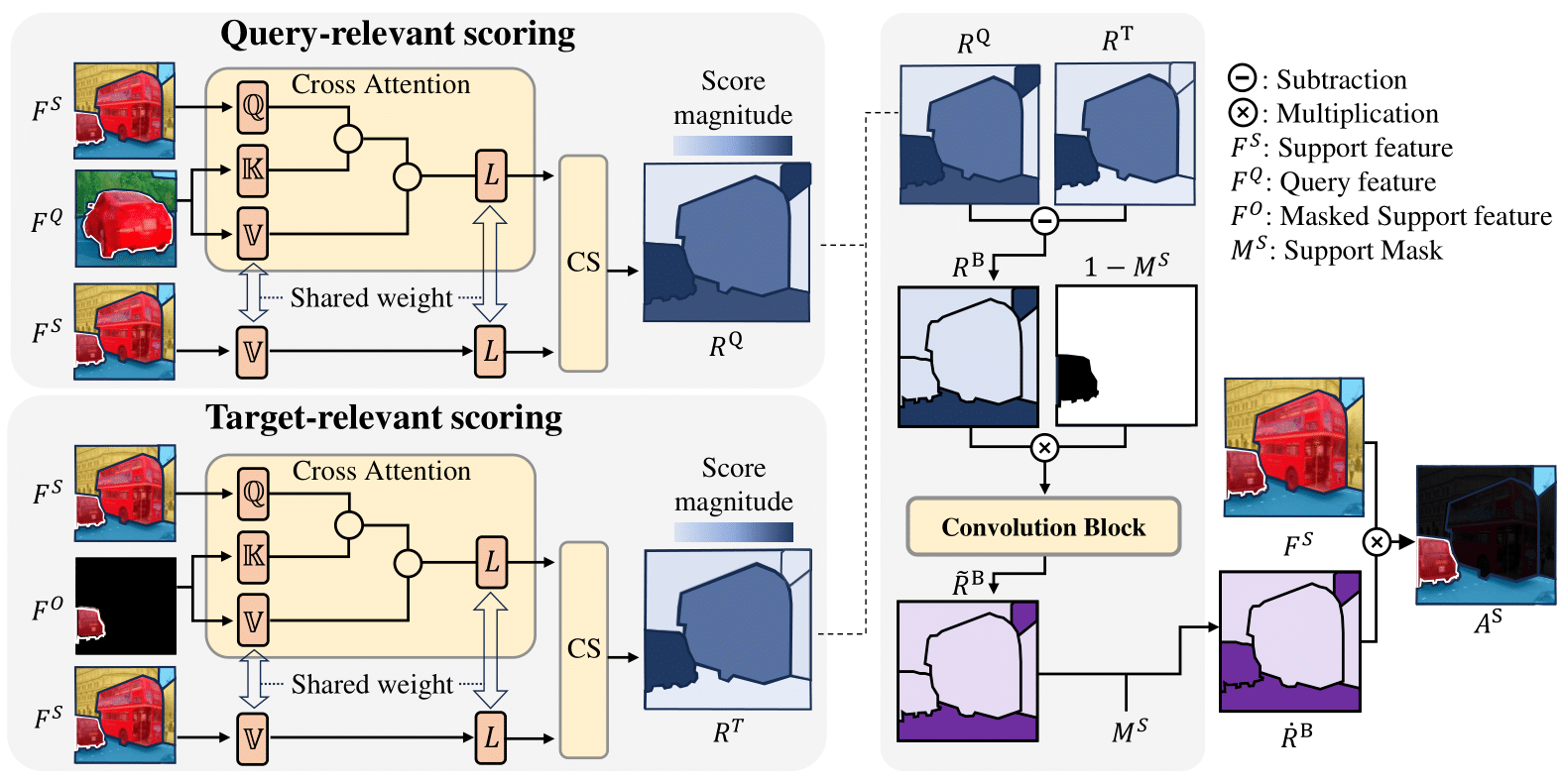Task-Disruptive Background Suppression for Few-Shot Segmentation
Few-shot segmentation aims to accurately segment novel target objects within query images using only a limited number of annotated support images. The recent works exploit support background as well as its foreground to precisely compute the dense correlations between query and support. However, they overlook the characteristics of the background that generally contains various types of objects. In this paper, we highlight this characteristic of background which can bring problematic cases as follows: (1) when the query and support backgrounds are dissimilar and (2) when objects in the support background are similar to the target object in the query. Without any consideration of the above cases, adopting the entire support background leads to a misprediction of the query foreground as background. To address this issue, we propose Task-disruptive Background Suppression (TBS), a module to suppress those disruptive support background features based on two spatial-wise scores: query-relevant and target-relevant scores. The former aims to mitigate the impact of unshared features solely existing in the support background, while the latter aims to reduce the influence of target-similar support background features. Based on these two scores, we define a query background relevant score that captures the similarity between the backgrounds of the query and the support, and utilize it to scale support background features to adaptively restrict the impact of disruptive support backgrounds. Our proposed method achieves state-of-the-art performance on PASCAL-5 and COCO-20 datasets on 1-shot segmentation. Our official code is available at github.com/SuhoPark0706/TBSNet.
PDF Abstract

 MS COCO
MS COCO
 PASCAL-5i
PASCAL-5i